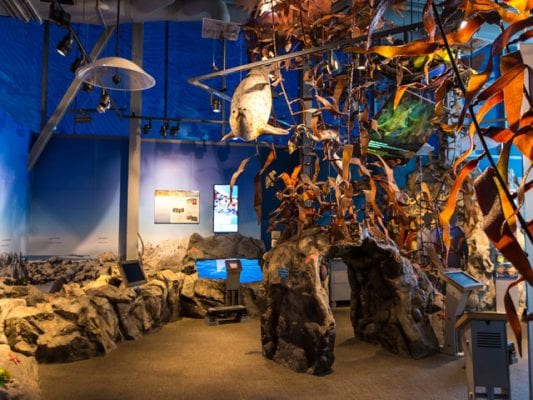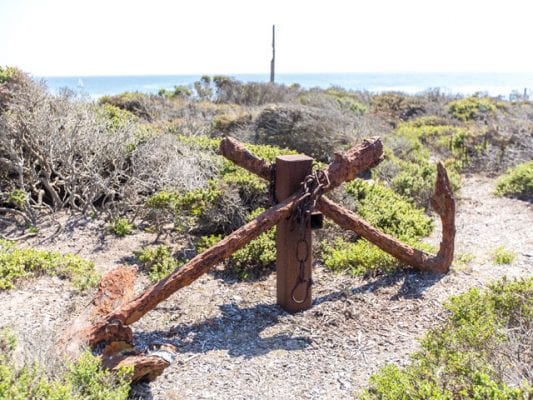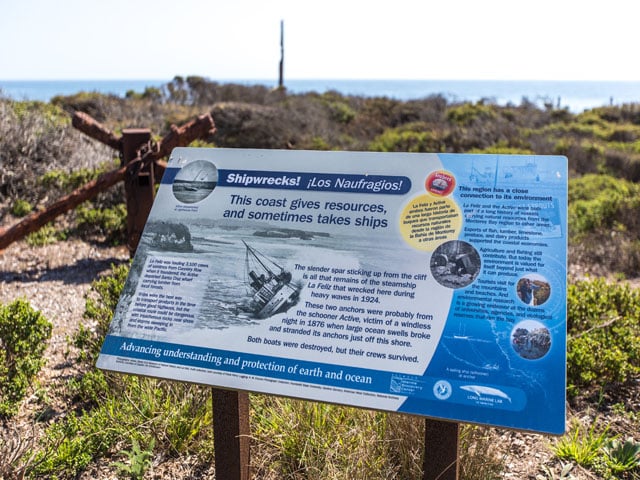The Monterey Bay is home to one of the most biologically diverse ecosystems on the planet. Scattered about its dramatic underwater terrain—picture a submerged Grand Canyon—may lie the remnants of more than a century of shipwrecks. Although many remains have likely deteriorated over time, a 2001 study recorded 463 vessels known to be lost within the Monterey Bay National Marine Sanctuary. If you’re wondering why so many ships sank off of our coast, and if you can spot any of their remains, read on to discover seafaring tales that are sure to buoy your spirits.

Before diving into shipwrecks, let’s define the Monterey Bay National Marine Sanctuary. The federally protected area was designated as a marine sanctuary in 1992 for the research and enjoyment of its teeming ocean environment. Home to an astounding variety of sea life, the sanctuary is often referred to as the Serengheti of the Sea. It extends 276 miles, from Rocky Point in Marin county to Santa Rosa Creek in San Luis Obispo county, and encompasses a whopping 4,024-square-foot patch of the Pacific Ocean—larger than Yellowstone National Park! On your next visit to Santa Cruz, check out the Monterey Bay National Marine Sanctuary Exploration Center which offers free admission and wonderfully immersive exhibits that detail the significance of the Sanctuary, including the visually striking, short film “One Breath” which screens continuously in the center’s theater.
Following the discovery of gold in the Sierra foothills, California’s population boomed, and a major offshore shipping lane was established to accommodate the growing demand for imported and exported goods to the many ports springing up along the coast. In fact, the maritime trade routes of the Gold Rush era helped shape new types of sea vessels including the lumber schooner and the clipper ship. It is many of these ships that wrecked within the coastline now encompassed by the Sanctuary.
During the latter half of the 19th century, the introduction of lighthouses not only added a touch of New England charm to the California coast, but also safely guided sea vessels through an often foggy coastline. North of Santa Cruz, the 1871 Pigeon Point Lighthouse takes its name from the jagged promontory on which it stands, and the Carrier Pigeon clipper ship that wrecked just offshore in 1853.

Closer to home, at least 25 shipwrecks have been reported along the Santa Cruz County coast. Perhaps the most well known is La Feliz, a 72-foot freighter that wrecked just offshore of where the Seymour Marine Discovery Center currently sits. On the night of October 1, 1924, the 100-ton vessel hit exceptionally high surf soon after the ship’s captain temporarily left the helm to a lesser-experienced crew member, and the ship smashed into a reef roughly 200 feet from shore. As waves pummeled the immobilized boat, it was washed closer to shore where onlookers atop the 30-foot bluff were able to toss a line to the vessel and rescue all 13 crew members and the ship’s mascot, a tabby cat. The grounded boat was soon destroyed by the relentless surf, but rumor has it that locals readily enjoyed the doomed ship’s cargo: 3,100 cases of Cannery Row sardines originally intended for San Francisco.

Today, you can see La Feliz’s tall auxiliary mast resting in situ, leaning against the seaside bluff that fronts the Seymour Marine Discovery Center. Off the center’s exhibit hall, a wooden patio dubbed the Shipwreck deck features an interpretive panel detailing La Feliz’s fate. The deck also features a hulking, rusted anchor thought to be salvaged from the Active, a 92-foot lumber schooner that ran aground on what is now known as Its Beach in October 1876. Bearing heavy railroad ties from a nearby wharf, the ship was beset by heavy seas that ran it ashore. Local shipwrecks weren’t confined to the 19th century. As recent as August 2018, the 56-foot Pacific Quest fishing boat ran aground near Natural Bridges State Beach—and not too far from where La Feliz wrecked—during low tide in the early morning hours. Its captain, the sole occupant, safely walked to shore.

Some might point to the S.S. Palo Alto—currently in ruins from damaging storm surges—as an example of a local shipwreck, yet the famous concrete ship was intentionally towed to its current locale at the end of Seacliff Beach pier. Built for WWI with a pioneering concrete hull, the tanker never saw service, and was tugged out to Seacliff, and converted into a ballroom-equipped floating entertainment venue during the 1930s. You can read the whole story here.
Visitors to the Santa Cruz Harbor can find an art sculpture of the ‘shipwreck’, encapsulating the deep sea wonders that surround the sanctuary.
The drinking and dancing on the S.S. Palo Alto may be long gone, but you can still sip a cold one while sailing the bay via modern-day outfitters such as O’Neill Yacht Charters and Chardonnay Sailing Charters. For more detail on public cruises, as well as additional ways to explore the Monterey Bay, check the many offerings listed at SantaCruz.org.
Updated September 2020


